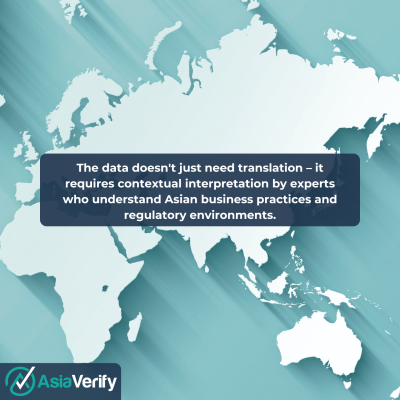As Southeast Asia’s digital economy accelerates, so does the complexity of doing business across its borders. In fast-growing markets like Vietnam and Indonesia, fintech and digital asset firms are expanding at record speed, driven by consumer adoption, investor interest, and rising demand for cross-border services. Vietnam’s fintech sector alone is forecast to grow from USD 16.9 billion in 2024 to over USD 62.7 billion by 2033. Meanwhile, Indonesia’s fintech market is projected to reach USD 11.2 billion in revenue by 2024, with strong growth across digital payments, investment platforms, and neo banking. Regional digital payments are also expected to hit nearly USD 1.7 trillion by 2029.
With similar growth trends across the APAC region, comes an urgent need for CFOs and compliance leaders to enhance due diligence, particularly around identifying ultimate beneficial owners. In many cases, opaque structures such as circular ownership, nominee arrangements, and shell layering can obscure the valid beneficial owner. These risks are especially pronounced in cross-border transactions where local records are fragmented or unreliable.
What are circular ownership patterns?
Circular ownership refers to situations where entities own shares in one another, creating a loop of ownership. These structures can hide the true controlling individuals behind a business, making UBO identification especially complex.
One example is the Tata Group (India), where various listed companies held shares in Tata Sons (the holding company), which in turn held shares in those companies. This circular crossholding created a complex ownership web, raising concerns about corporate governance and transparency of control. Although not inherently illegal, such structures are often viewed cautiously by regulators.
With increasing scrutiny from regulators and the Financial Action Task Force (FATF), it is no longer sufficient to rely on surface-level due diligence. CFOs must ensure that beneficial owners are correctly identified, screened, and documented, not just for internal assurance but to satisfy audits, reduce exposure, and build trust with stakeholders.
What is an Ultimate Beneficial Owner?
An Ultimate Beneficial Owner (UBO) is the individual who ultimately owns or controls a company, either through a significant shareholding, voting rights, or the ability to influence key decisions. The Financial Action Task Force (FATF) defines a UBO as a natural person who owns or controls a customer and/or on whose behalf a transaction is conducted.
Typically, this includes individuals who:
- Own 25% or more of a company’s shares or voting rights
- Exercise control via indirect ownership (e.g. through holding companies, trusts, or nominee arrangements)
- Influence decisions or benefit from the company, even if not listed as a legal owner
In practice, identifying a UBO often requires going beyond what is recorded on paper to determine who truly holds power and influence over a legal entity.
Why UBO Verification is Especially Challenging in APAC
While many jurisdictions have introduced UBO requirements, enforcement and data transparency vary significantly across the APAC region. CFOs must be particularly vigilant in markets where regulatory systems are still maturing, or public records are not easily accessible.
Regulatory inconsistency
Each country has its definition, reporting thresholds, and enforcement levels. For example, Singapore requires entities to maintain a register of beneficial owners, while jurisdictions such as Vietnam or Indonesia offer more limited public access to ownership information.
Language and data format barriers
Company data is often recorded in local languages and unique registry formats, making it difficult to standardise verification processes across borders.
Complex ownership structures
Family-owned conglomerates, state-linked enterprises, and multi-layered holding companies are prevalent in the APAC region. Identifying the true UBO can involve tracing through several levels of ownership and control.
Key Considerations for CFOs During UBO Verification Processes
- Direct and indirect ownership Understanding both forms is critical. An individual may not appear in company records but can still exert influence through intermediary entities.
- Multiple UBOs Companies may have more than one beneficial owner. Identifying only the largest shareholder is not sufficient, particularly when it comes to compliance with anti-money laundering (AML) or counter-terrorism financing regulations.
- Ongoing monitoring Ownership can change frequently. A stakeholder who did not meet the 25% threshold last quarter may now qualify as a UBO. Relying on static data significantly increases risk exposure. Regular reviews of UBO information are essential.
- Jurisdiction-specific compliance UBO laws in APAC are not harmonised. Maintaining a centralised process that accounts for local requirements is essential to avoid regulatory gaps.
- Documentation and auditability CFOs should ensure they maintain a clear audit trail of how UBOs are identified and verified. This is critical for both internal governance and external regulatory reviews.
- Screening for risk UBO information should be screened against PEP (Politically Exposed Persons) lists, global sanctions, and adverse media to assess potential risks before engaging in business.
- Integration with AML/KYC UBO identification should not operate in isolation. It should be integrated into broader AML and Know Your Customer (KYC) workflows to ensure a consistent and comprehensive risk management approach.
Practical Steps for CFOs to Improve UBO Verification
To reduce compliance risk and improve transparency, finance leaders operating in APAC should consider the following actions:
- Review corporate records thoroughly
Begin with shareholder agreements, company registries, and legal filings to understand the ownership structure. - Conduct enhanced due diligence.
Go beyond surface-level data to investigate the ownership chain and relationships behind the legal entities involved. - Verify identities using trusted data sources.
Confirm the identity of beneficial owners using official registry data and recognised documents. - Monitor for changes over time.
Establish procedures for ongoing monitoring of changes to UBO status across your portfolio of partners and subsidiaries. - Adopt purpose-built technology
Manual processes are time-consuming and error prone. Platforms like AsiaVerify can automate UBO verification by accessing official sources across the region. - Seek local expertise when required.
Consult with legal or compliance specialists familiar with the specific jurisdictions in which you operate. - Maintain accurate records
Keeping detailed and up-to-date records of UBO information is essential for demonstrating compliance and simplifying audit processes.
APAC-Specific Considerations and UBO Verification Trends
A diverse range of regulatory approaches to UBO transparency characterises the APAC region. While some countries maintain centralised beneficial ownership registers, others place the onus on businesses to gather and store this data themselves.
CFOs should stay informed of ongoing developments, such as regulatory reforms, enhanced enforcement policies, and data-sharing agreements between countries. Proactive adaptation to these changes will ensure your organisation remains compliant and prepared for future scrutiny.
How AsiaVerify Supports Real-Time UBO Verification and Compliance in APAC
AsiaVerify enables CFOs and compliance teams to verify ultimate beneficial ownership across multiple jurisdictions in the APAC region in real-time. The platform is designed to address the region’s unique regulatory and data challenges, offering:
- Direct access to real-time corporate data
- Transparent UBO mapping, even in jurisdictions with limited public access
- Multi-layered ownership tracing and visualisation
- Real-time alerts on changes to ownership or corporate structure
- Screening against international sanctions, politically exposed persons (PEPs), and watchlists
- Downloadable, audit-ready reports for internal and regulatory use
Whether you are onboarding a new vendor in Malaysia, entering a joint venture in Thailand, or assessing a partner in Vietnam, AsiaVerify ensures you have the clarity and confidence required to proceed safely.
Ready to Strengthen Your UBO Due Diligence and Verification?
If your organisation operates across APAC and you’re seeking a faster, more reliable way to identify and monitor ultimate beneficial ownership, our team is here to help.
Get in touch to book a personalised demo and see how AsiaVerify can support your compliance, reduce manual workload, and give you greater confidence in every business relationship.
Contact us today to get started.






